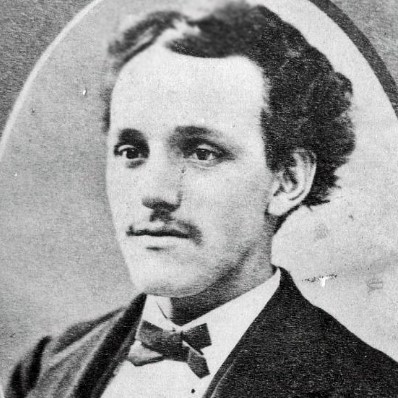
1849 - 1876
Thomas W. Piper
Summary
Name:
Nickname:
The Boston Belfry Murderer / Boston Woman-Killer / Piper the MurdererYears Active:
1873 - 1875Birth:
April 22, 1849Status:
ExecutedClass:
Serial KillerVictims:
2+Method:
BludgeoningDeath:
May 26, 1876Nationality:
USA
1849 - 1876
Thomas W. Piper
Summary: Serial Killer
Name:
Thomas W. PiperNickname:
The Boston Belfry Murderer / Boston Woman-Killer / Piper the MurdererStatus:
ExecutedVictims:
2+Method:
BludgeoningNationality:
USABirth:
April 22, 1849Death:
May 26, 1876Years Active:
1873 - 1875bio
Thomas W. Piper was born on April 22, 1849, in Nova Scotia, Canada. He was the second son of T.C. Piper, a farmer by trade, and the family lived a modest life until relocating to the United States in 1866. Upon settling in Boston, Massachusetts, young Thomas sought better prospects and began working various jobs, displaying a reputation for intelligence and literacy. Initially employed as a carpenter, he moved into clerical positions around the city, where he gained a respectable standing.
Piper's involvement with the Baptist community led to his hiring as sexton at the Warren Avenue Baptist Church in Boston. He suffered from a kidney condition, which he self-medicated with laudanum mixed with alcohol, a combination that reportedly induced hallucinations and altered mental states. Unknown to his family and church colleagues, Piper had begun committing secret crimes before his known murders. He engaged in acts of arson.
murder story
Thomas W. Piper’s known criminal spree began on December 5, 1873, with the murder of Bridget Landregan, a domestic servant returning home in the Dorchester area of Boston. On that evening, Piper, after ingesting a mix of opium and alcohol, armed himself with a wooden shaft and stalked Landregan along Columbia Street. He struck her in the head, killing her instantly. Before he could attempt any further assault, a passerby approached, prompting Piper to flee. Though arrested along with others, lack of evidence led to his release. Detectives even extradited Landregan’s former lover from Ireland, but he too was cleared and later murdered in his homeland. Piper, having evaded justice, resumed his life and continued his violent path.
In 1874, Piper assaulted Mary Tyner, a prostitute he met on Lagrange Street. After drinking with her at a saloon and accompanying her home, he bludgeoned her with a heavy object while she slept. He fled the scene and returned to the church. Tyner survived the brutal attack but was mentally and physically impaired, eventually confined to a lunatic asylum. She could not identify her assailant. A man named Colby, one of her past lovers, was wrongly arrested and later released.
On May 23, 1875, during a Sunday service at the church where he worked, Piper led five-year-old Mabel Hood Young up to the belfry under the pretense of showing her pigeons. Once alone, he bludgeoned her with a cricket bat, intending to kill and perhaps sexually assault her. Mistakenly believing she was dead, he moved her from the scene and escaped. She was discovered later, mortally injured, and died the following evening. A witness recalled seeing him leap from the belfry in panic.
Piper’s first trial resulted in a hung jury, with nine jurors favoring conviction and three voting for acquittal. The second trial, led by Attorney-General Charles R. Train, relied heavily on circumstantial evidence. Though Piper initially maintained his innocence, the stress of the proceedings eventually wore him down. He confessed to Mabel’s murder, offering first a fabricated explanation before finally admitting to intentionally killing her. In his confession, he also admitted to the murder of Bridget Landregan, the attack on Tyner, various acts of arson, and an additional murder of a girl named Minnie Sullivan, though that last case remained unproven in court.
Despite attempts to appeal the sentence, Piper was hanged at the Suffolk County Jail on May 26, 1876, alongside another murderer, Samuel J. Frost. The execution was attended by around 300 individuals. His body was privately interred at Mount Hope Cemetery. At his family's request, Piper's written confession to Sheriff John M. Clark was not made public, although the details of his major crimes were already widely known.